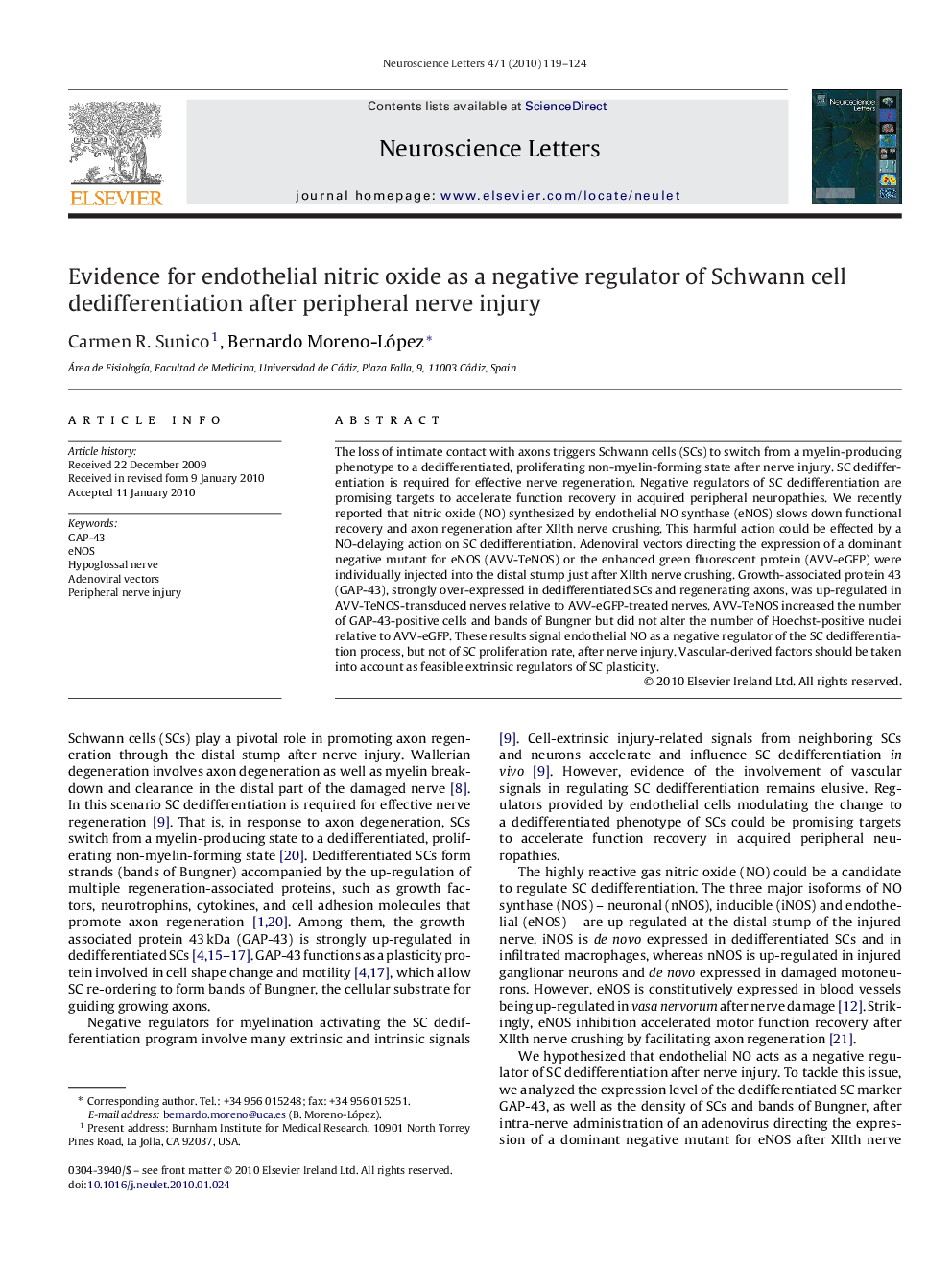| Article ID | Journal | Published Year | Pages | File Type |
|---|---|---|---|---|
| 4346352 | Neuroscience Letters | 2010 | 6 Pages |
Abstract
The loss of intimate contact with axons triggers Schwann cells (SCs) to switch from a myelin-producing phenotype to a dedifferentiated, proliferating non-myelin-forming state after nerve injury. SC dedifferentiation is required for effective nerve regeneration. Negative regulators of SC dedifferentiation are promising targets to accelerate function recovery in acquired peripheral neuropathies. We recently reported that nitric oxide (NO) synthesized by endothelial NO synthase (eNOS) slows down functional recovery and axon regeneration after XIIth nerve crushing. This harmful action could be effected by a NO-delaying action on SC dedifferentiation. Adenoviral vectors directing the expression of a dominant negative mutant for eNOS (AVV-TeNOS) or the enhanced green fluorescent protein (AVV-eGFP) were individually injected into the distal stump just after XIIth nerve crushing. Growth-associated protein 43 (GAP-43), strongly over-expressed in dedifferentiated SCs and regenerating axons, was up-regulated in AVV-TeNOS-transduced nerves relative to AVV-eGFP-treated nerves. AVV-TeNOS increased the number of GAP-43-positive cells and bands of Bungner but did not alter the number of Hoechst-positive nuclei relative to AVV-eGFP. These results signal endothelial NO as a negative regulator of the SC dedifferentiation process, but not of SC proliferation rate, after nerve injury. Vascular-derived factors should be taken into account as feasible extrinsic regulators of SC plasticity.
Related Topics
Life Sciences
Neuroscience
Neuroscience (General)
Authors
Carmen R. Sunico, Bernardo Moreno-López,
